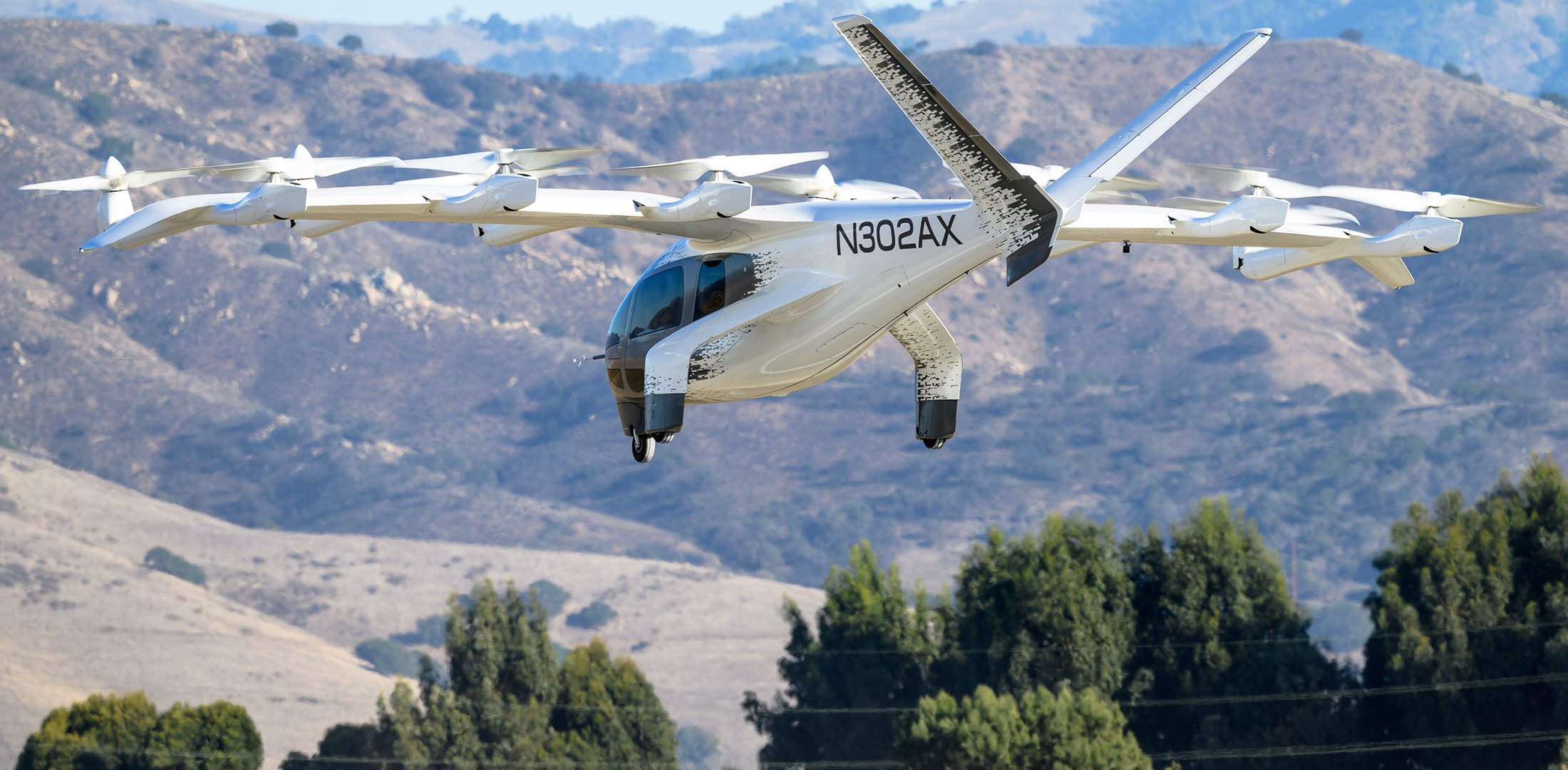Archer Aviation has completed the first of three phases in the flight test campaign for its Midnight eVTOL air taxi and is on track to begin certification testing with the FAA later this year, the California-based company announced January 31. Archer aims to have the all-electric, four-passenger aircraft in commercial service by the end of 2025, starting with routes between airports and city centers.
The Midnight prototype achieved its first hover flights in October 2023 and has been routinely flying for the past three months at Archer’s test facilities in Salinas, California. Archer also has been flying a two-seat technology demonstrator called Maker since 2019, and it achieved the first transition flight with the Maker aircraft in December 2022. Transitioning from hover to cruise is a key milestone in the development of any eVTOL aircraft, and this will take place during the second phase of Midnight’s flight test campaign, according to Archer.
For the initial phase of Midnight’s flight test campaign, the remotely piloted prototype executed “an array of progressively more complex flight maneuvers,” including pedal turns and chirp signal tests to evaluate the aircraft’s roll, pitch, and yaw handling qualities. Archer also conducted critical azimuth testing to assess the aircraft’s crosswind capabilities, and it worked with the FAA to test the downwash Midnight generates during takeoff and landing. The company says it recently upgraded the powertrain on the Midnight prototype to include the first high-voltage battery packs assembled at its pilot manufacturing line in San Jose.
The second phase of Midnight’s flight test campaign will involve what Archer calls an “incremental approach” to speed testing, with the aircraft beginning to angle its six tilting propellers from a vertical to a horizontal orientation to propel itself forward. As it gains horizontal speed, the wing provides increasingly more lift, and eventually the aircraft will transition into fully wingborne flight. Phase 2 of flight testing will culminate with Midnight’s first transition flights. Archer says the Midnight aircraft will have a maximum cruise speed of 150 mph (240 kph), but it doesn’t necessarily need to go that fast to achieve a transition flight. The Maker aircraft transitions to cruise at a speed of about 87 knots (100 mph or 160 kph).
For Phase 3, Archer plans to fly the Midnight aircraft on simulated commercial routes. The company says these flights will demonstrate the aircraft’s operational readiness ahead of the for-credit FAA testing it expects to begin later this year. It is building six additional Midnight prototypes at its San Jose facilities specifically for the purposes of FAA certification testing, and the first of those “FAA-conforming” aircraft will be used for the first flight with a pilot on board.
Archer says it expects the Midnight aircraft to deliver a range of up to 100 miles (160 km) on a single charge, but the electric air taxi is optimized for shorter back-to-back flights of around 20 miles (32 km) with 10 minutes of recharging in between trips. The company is planning to launch commercial air taxi routes in major U.S. cities such as New York City and Chicago with its partner United Airlines in 2025, with international operations launching in Dubai and Abu Dhabi the following year.
